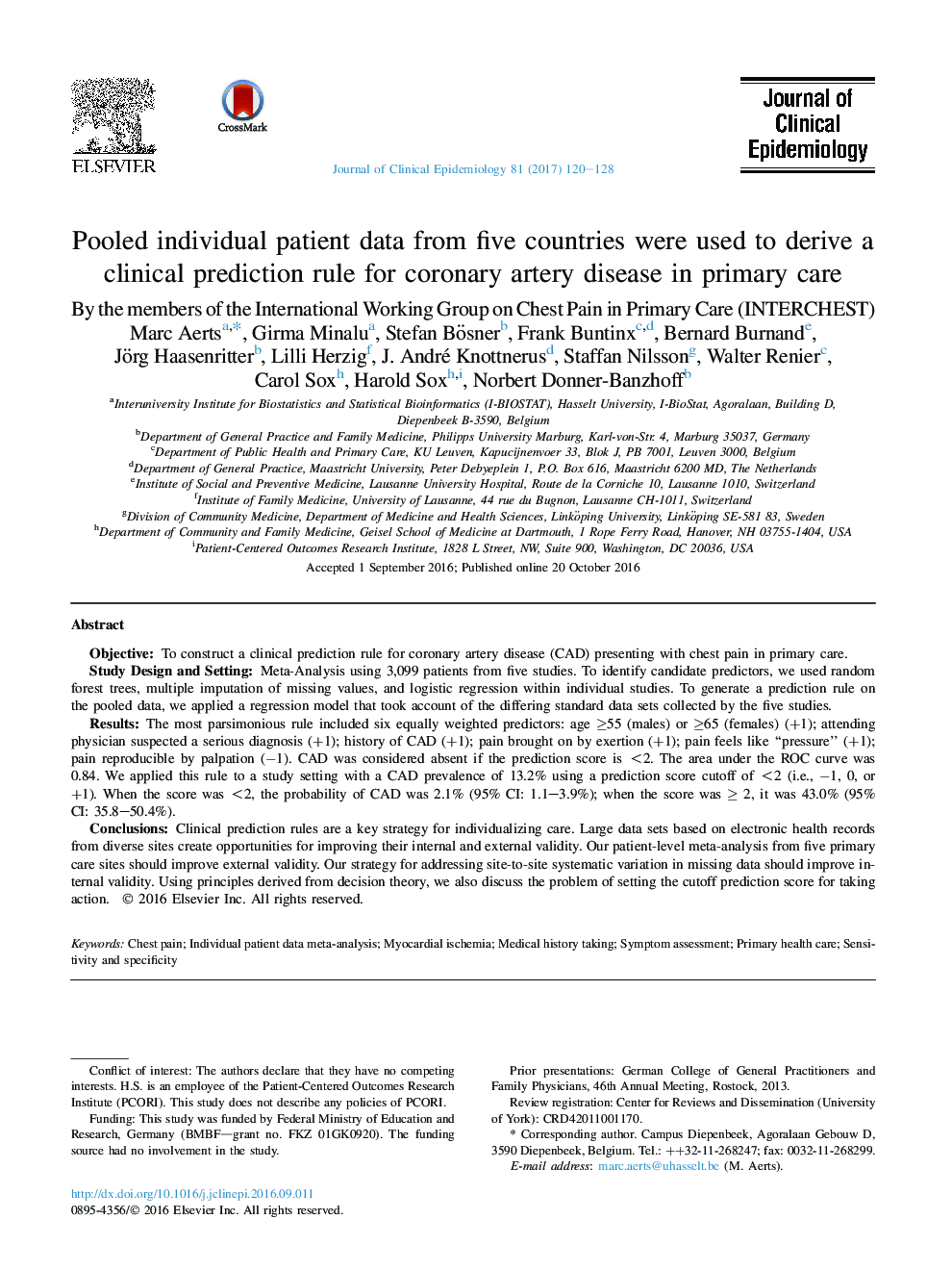| Article ID | Journal | Published Year | Pages | File Type |
|---|---|---|---|---|
| 5121857 | Journal of Clinical Epidemiology | 2017 | 9 Pages |
ObjectiveTo construct a clinical prediction rule for coronary artery disease (CAD) presenting with chest pain in primary care.Study Design and SettingMeta-Analysis using 3,099 patients from five studies. To identify candidate predictors, we used random forest trees, multiple imputation of missing values, and logistic regression within individual studies. To generate a prediction rule on the pooled data, we applied a regression model that took account of the differing standard data sets collected by the five studies.ResultsThe most parsimonious rule included six equally weighted predictors: age â¥55 (males) or â¥65 (females) (+1); attending physician suspected a serious diagnosis (+1); history of CAD (+1); pain brought on by exertion (+1); pain feels like “pressure” (+1); pain reproducible by palpation (â1). CAD was considered absent if the prediction score is <2. The area under the ROC curve was 0.84. We applied this rule to a study setting with a CAD prevalence of 13.2% using a prediction score cutoff of <2 (i.e., â1, 0, or +1). When the score was <2, the probability of CAD was 2.1% (95% CI: 1.1-3.9%); when the score was ⥠2, it was 43.0% (95% CI: 35.8-50.4%).ConclusionsClinical prediction rules are a key strategy for individualizing care. Large data sets based on electronic health records from diverse sites create opportunities for improving their internal and external validity. Our patient-level meta-analysis from five primary care sites should improve external validity. Our strategy for addressing site-to-site systematic variation in missing data should improve internal validity. Using principles derived from decision theory, we also discuss the problem of setting the cutoff prediction score for taking action.
